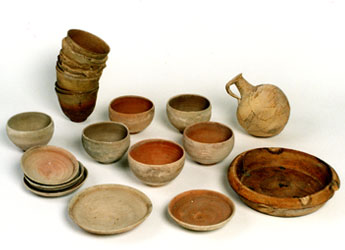The Qumran Community
The archaeological site of Khirbet Qumran is situated at the northwest corner of the Dead Sea, some 35 km east of Jerusalem. Most scholars believe that the site was home to a reclusive Jewish sect, probably a group of Essenes, which along with Pharisees, Sadducees, Samaritans, Zealots, followers of Jesus and John the Baptist, and others, constituted the fabric of Jewish society in the Land of Israel, from the rise of the Hasmoneans (166 BCE) until the destruction of the Second Temple (70 CE).
This sect, referred to in the scrolls as adat hayahad (the "Council of the Community"), apparently formed as a result of profound controversies on various Temple matters that broke out in Jerusalem, such as the calendar, laws of ritual purity, and tithes. These disputes seem to have prompted the founder of the sect, known in the scrolls as the "Teacher of Righteousness," to abandon what he and his followers regarded as the "defiled" Temple, withdraw from the Jewish community at large, and, at a certain stage, establish an isolated settlement near the Dead Sea.
The members of the sect were extremely reclusive and entertained messianic expectations. They hated their foes with a passion. Their ultimate aim was to return to Jerusalem and restore divine worship in a future, entirely pure Temple, which they believed would be built by God Himself when Redemption came. These hopes were finally dashed in 68 CE when the Roman army destroyed the settlement on its way to Jerusalem to suppress the Jewish Revolt.
Most scholars have argued that the scrolls originally formed part of a sectarian library located in the community center at Qumran. They were hidden in the caves by the sectarians themselves, who left their home in the face of an advancing Roman army, hoping that in the near future they would be able to retrieve the sacred documents from their hiding places. An alternative theory, however, has been raised, according to which some or all the scrolls were placed in the caves by Jewish rebels fleeing from Jerusalem, thus redefining or even negating the former hypothesis regarding the Qumran-Essene origin of the scrolls.

Qumran Refectory

Utensils from Qumran